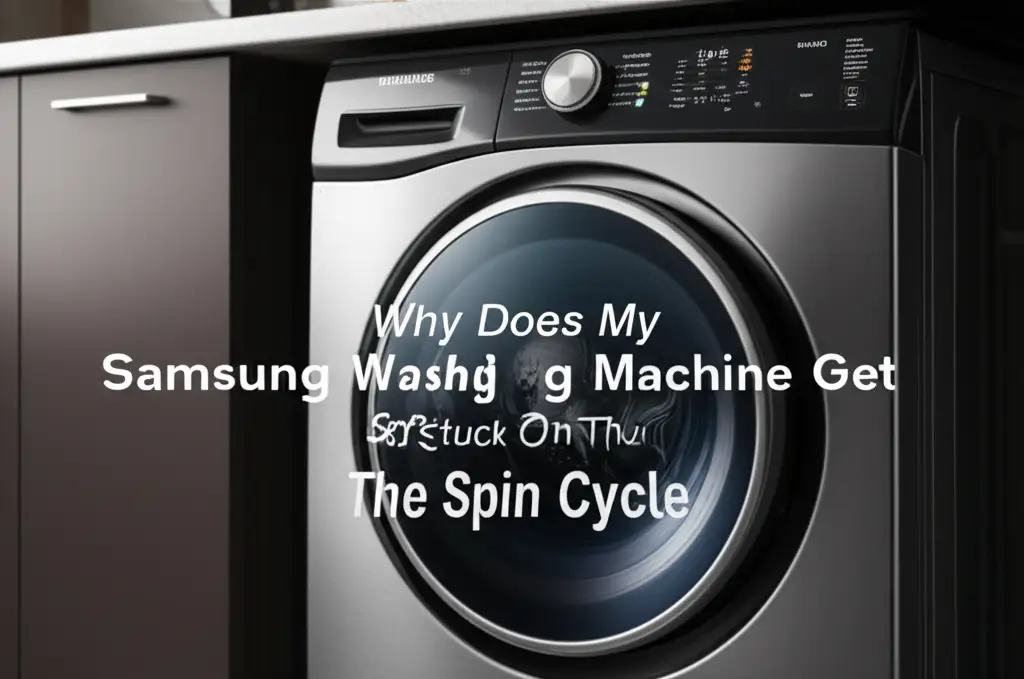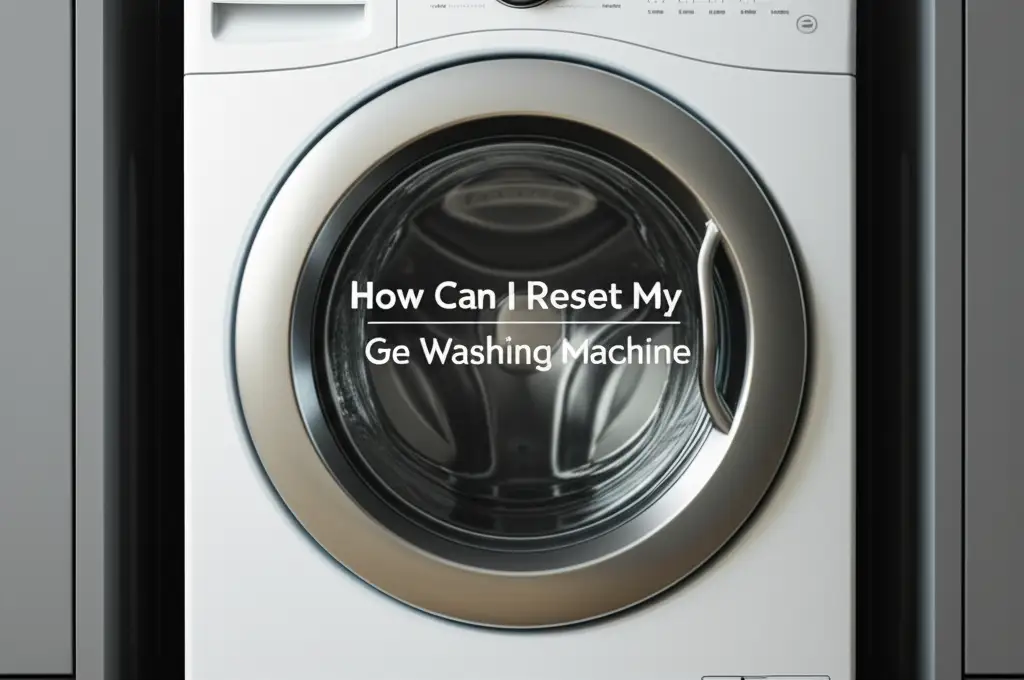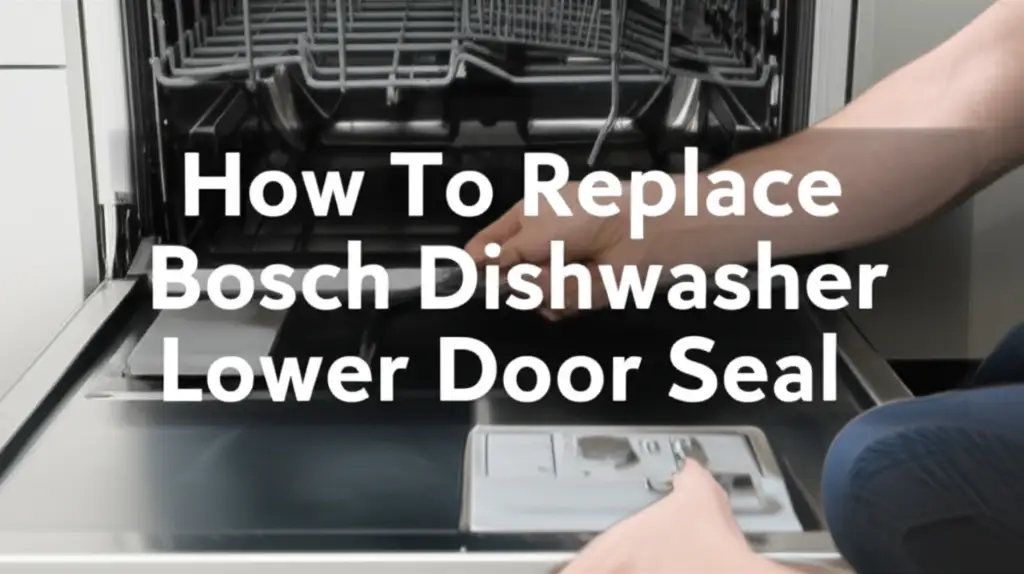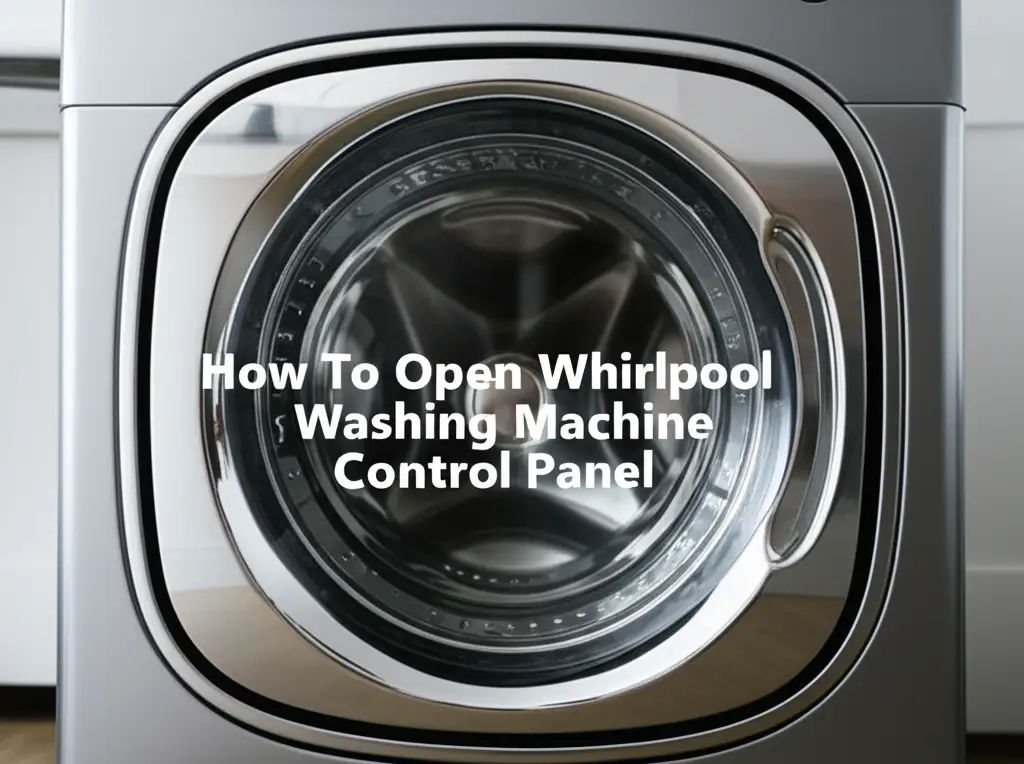· Todd Martin · Home Appliance Repair · 21 min read
Why Is My Beko Washing Machine Filling With Water But Not Spinning
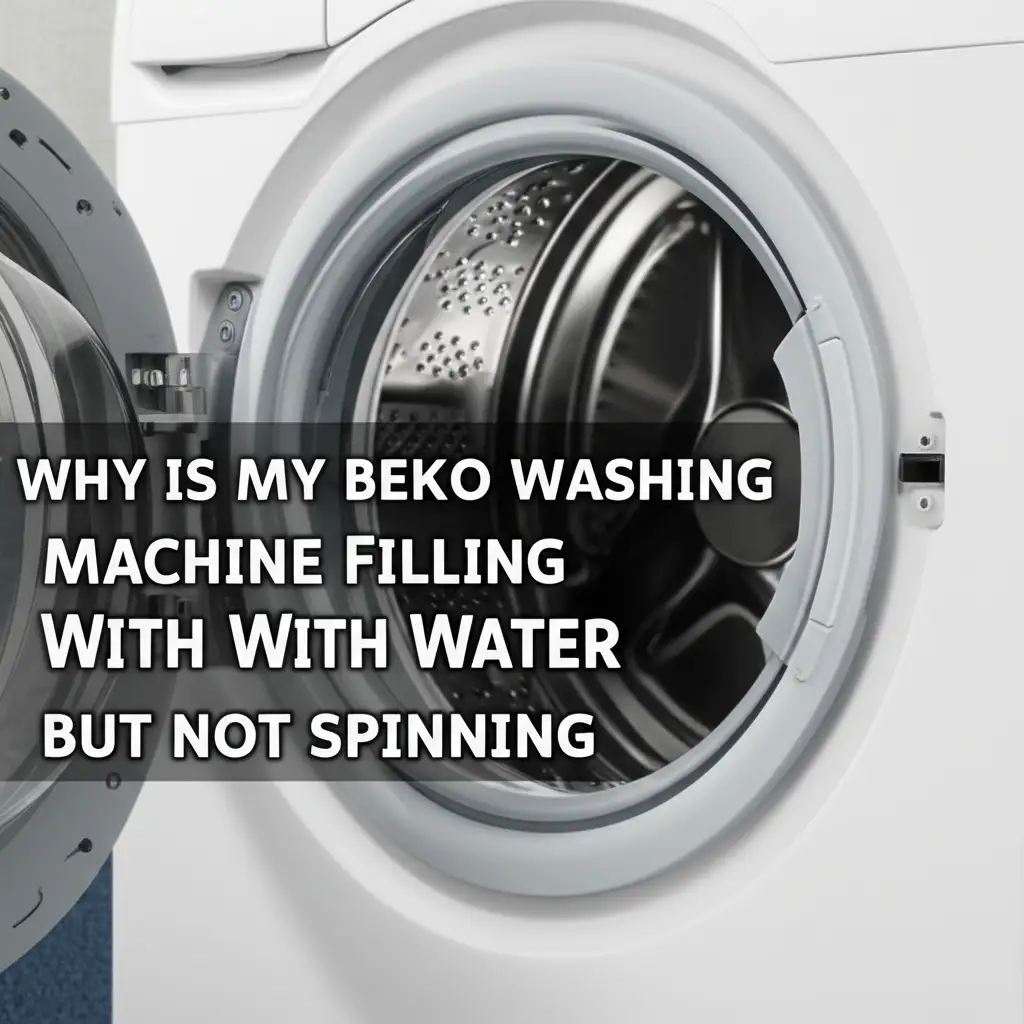
Beko Washing Machine Fills But Won’t Spin? Here’s Why!
A common and truly frustrating household issue is when your washing machine fills with water but then stubbornly refuses to spin. If you own a Beko washing machine and are facing this exact problem, you are not alone. This guide helps you understand why your Beko washing machine is filling with water but not spinning, and it provides practical solutions. We explore common causes, offer clear troubleshooting steps, and help you get your laundry routine back on track.
You do not need to panic or immediately call a technician. Many of these issues are simple to diagnose and fix yourself. We will cover everything from drainage clogs to motor issues and faulty sensors. My goal is to empower you with the knowledge to tackle this common washing machine malfunction confidently.
Takeaway
- Check Drainage: Ensure the drain hose is clear and the pump filter is not clogged. Blockages often prevent the spin cycle.
- Balance Load: Overloaded or unbalanced loads can stop the spin cycle for safety reasons. Redistribute items.
- Inspect Components: Look at the drive belt, motor, and door lock. These parts are critical for spinning.
- Reset Machine: A simple power cycle can sometimes clear electronic glitches.
- Consider Professional Help: If basic troubleshooting fails, a qualified technician may be necessary.
Your Beko washing machine fills with water but does not spin primarily due to issues with drainage, an unbalanced load, a faulty door lock, or problems with the motor or control board. The machine cannot spin safely or effectively if water remains or if it detects an imbalance or open door.
Understanding the Beko Washing Machine Spin Cycle
The spin cycle is a vital part of your Beko washing machine’s operation. It removes excess water from your clothes using centrifugal force. This process makes laundry less heavy and helps items dry faster. When your washing machine fills with water but fails to spin, it indicates a breakdown in this crucial stage.
The machine has a specific sequence it follows. First, it drains the wash water. Then, it engages the motor to rapidly spin the drum. If any part of this sequence is interrupted, the spin will not occur. Understanding this process helps in diagnosing the problem.
Various safety mechanisms are also in place. These prevent the machine from spinning if conditions are not safe. For example, if the lid is open or water is still present, the machine will not spin. This protects both the user and the appliance.
How the Spin Cycle Works
When the wash cycle finishes, your Beko washing machine prepares for spinning. It first activates the drain pump. This pump removes all the dirty water from the drum. Proper drainage is essential before spinning begins.
After draining, the machine checks various sensors. These sensors confirm the water level is low and the door is securely locked. Only then does the main motor activate. The motor spins the inner drum at very high speeds, forcing water out of the clothes through small holes.
If any of these steps fail, your Beko washing machine will fill with water but not spin. For example, a clogged drain pump prevents water removal. A faulty door lock signals the machine that it is unsafe to spin. Identifying which step is failing is key to fixing the issue.
Common Causes: Drainage Issues Preventing Spin
One of the most frequent reasons your Beko washing machine fills with water but does not spin is a drainage problem. The machine is programmed not to spin if it cannot effectively drain the water. This is a safety feature and also prevents damage to components. If the water does not leave the drum, the machine cannot balance the load or achieve high spin speeds.
Drainage issues can stem from several points in the system. The drain hose might be kinked or blocked. The drain pump filter could be clogged with lint, coins, or other small items. Sometimes, the drain pump itself might be faulty and unable to push water out.
Addressing drainage problems often solves the non-spinning issue directly. It is usually the first area you should investigate when troubleshooting. Clearing blockages is often a simple DIY task.
Clogged Drain Pump Filter
Your Beko washing machine has a drain pump filter designed to catch lint, coins, and small objects. This prevents them from reaching and damaging the pump. Over time, this filter can become severely clogged. A clogged filter restricts water flow, preventing the machine from draining properly.
If the machine cannot drain, it will not proceed to the spin cycle. You will find water sitting in the drum even after the wash cycle ends. Accessing and cleaning this filter is usually straightforward. Always place towels down before opening the filter cover, as some water will likely spill out.
Regularly cleaning this filter can prevent future non-spinning issues. It is part of good washing machine maintenance. You can learn more about this process in our guide on how to clean washing machine filter.
Blocked or Kinked Drain Hose
The drain hose carries water from your washing machine to your home’s drain pipe. This hose can become kinked, bent, or internally blocked. A kinked hose restricts water flow, similar to a clogged filter. Internal blockages can occur from accumulated lint or debris over time.
Inspect the drain hose at the back of your Beko washing machine. Ensure it is not bent sharply or squashed against a wall. If you suspect an internal blockage, you may need to detach the hose and check it. Clear any visible obstructions.
Sometimes, the blockage is not in the hose itself but in the household standpipe or sink drain it connects to. Ensure that external drain point is also clear. A clear path for water out of the machine is essential for the spin cycle to engage.
Faulty Drain Pump
If the filter is clean and the hose is clear, but water still remains, the drain pump itself might be faulty. The drain pump is an electric motor that pushes water out of the machine. If it fails, water cannot be removed, and the spin cycle will not start.
A faulty drain pump might make unusual noises, like humming or grinding, or no noise at all. Testing the pump usually requires a multimeter and some technical knowledge. This is a more complex repair than cleaning a filter or hose.
Replacing a drain pump can be a DIY task for those comfortable with appliance repair. However, if you are unsure, calling a professional is a good idea. Knowing when to get a professional to replace a faulty part can save you time and further damage.
Motor and Belt Problems: When the Heart Doesn’t Beat
Beyond drainage issues, problems with the motor and drive belt are common reasons why a Beko washing machine fills with water but does not spin. The motor is the “heart” of the spin cycle, providing the power to rotate the drum. The drive belt transmits this power from the motor to the drum. If either of these components malfunctions, the drum will not spin, even if the machine fills correctly.
These issues often manifest as a complete lack of drum movement during the spin phase. You might hear the motor attempting to run but no drum rotation, or no sound at all. Identifying issues with these parts usually requires access to the machine’s internal components, often by removing the back or top panel.
Safety is paramount when checking these parts. Always unplug the washing machine before you start any internal inspection. This prevents electrical shock.
Broken or Loose Drive Belt
Most Beko washing machines use a drive belt to transfer power from the motor to the drum. Over time, this belt can become worn, loose, or even break. If the drive belt is loose, it might slip and not transfer enough power to spin the drum effectively. If it breaks, the drum will not spin at all.
You can often access the drive belt by removing the back panel of your washing machine. Once visible, check its condition. Look for cracks, fraying, or if it has come off the pulleys. A snapped belt is easy to identify; it will be detached from the motor and drum pulleys.
Replacing a drive belt is a relatively straightforward repair. You simply loop the new belt around the motor pulley and then around the larger drum pulley. Ensure it is tensioned correctly for proper operation.
Faulty Motor
The motor is what makes the drum spin. If the motor itself is faulty, the washing machine will fill with water but fail to spin. Motor problems can manifest in several ways. The motor might hum loudly but not turn, indicating it is getting power but not engaging. It might also show no signs of life at all.
Diagnosing a faulty motor often requires checking electrical connections and potentially testing the motor’s windings with a multimeter. This is a more advanced diagnostic task. Sometimes, a motor might just need its carbon brushes replaced, which is a simpler fix.
If the motor needs replacing, it is typically a more expensive repair. For those less familiar with electrical work or heavy appliance components, consulting a professional is advisable. They can properly diagnose motor issues and perform safe replacements.
Faulty Sensors and Control Boards
Modern Beko washing machines rely heavily on electronic sensors and control boards. These components monitor various functions and ensure the machine operates safely and efficiently. If a sensor malfunctions or the main control board develops a fault, it can prevent the spin cycle from initiating, even if the machine correctly fills with water. The machine’s internal logic prioritizes safety, stopping operation if a critical sensor provides an error reading.
These issues can be tricky to diagnose without specialized tools. They often result in error codes displayed on the machine’s screen. Consulting your Beko washing machine’s user manual for error code interpretations is a good starting point. Understanding these codes helps pinpoint the specific sensor or module that is causing the problem.
While some sensor issues might be fixable by checking connections, a faulty control board usually requires replacement. This can be an expensive component.
Door Lock Mechanism
The door lock mechanism is a critical safety feature on your Beko washing machine. The machine will not start or spin if it detects that the door is not securely closed and locked. This prevents water leaks and injuries during high-speed spinning. If the door lock mechanism is faulty, it might incorrectly signal to the control board that the door is open, even when it is closed.
You might notice the door light flashing or an error code related to the door. Sometimes, a simple jiggle of the door can resolve a temporary glitch. However, if the lock is mechanically broken or has an electrical fault, it will need replacement. This is a common part to fail due to repeated use.
Replacing a door lock mechanism is a common DIY repair. It usually involves unscrewing the old unit and connecting a new one. Ensure you choose the correct replacement part for your Beko model.
Pressure Switch or Water Level Sensor
The pressure switch, also known as the water level sensor, tells your washing machine how much water is in the drum. It is crucial for ensuring the machine fills with the correct amount of water for the wash. It also signals when the water has been sufficiently drained before the spin cycle.
If this sensor malfunctions, it might incorrectly believe that there is still water in the drum, even if the machine has drained. In such cases, the machine will not proceed to the spin cycle as a safety precaution. This can be a frustrating issue since you can visually see the drum is empty.
Checking the pressure switch involves inspecting the air trap tube connected to it for blockages. A clogged tube can give false readings. If the tube is clear, the pressure switch itself may need replacing. This requires carefully disconnecting wires and a small air hose.
Control Board (PCB) Failure
The main control board, or PCB (Printed Circuit Board), is the brain of your Beko washing machine. It controls all functions, from filling with water to spinning the drum. If the control board develops a fault, it can send incorrect signals or fail to send necessary commands for the spin cycle.
Symptoms of a faulty control board can be varied. The machine might behave erratically, specific cycles might not work, or the machine might simply refuse to spin without any other apparent cause. There might be no error codes, or a general “electronic fault” code.
Replacing a control board is typically a job for a professional, as it can be complex and expensive. Self-replacement risks further damage if not done correctly. Always consider this a last resort after ruling out simpler issues.
Overloading and Unbalanced Loads
Your Beko washing machine is designed to wash and spin clothes effectively within certain parameters. Overloading the machine or having an unbalanced load are common reasons why it might fill with water but then fail to spin. This is not necessarily a mechanical fault but rather a safety and efficiency mechanism. The machine detects these conditions and stops the spin cycle to prevent damage to itself or the laundry.
Recognizing these issues early can save you a lot of troubleshooting time. They are among the easiest problems to fix. You simply need to adjust the laundry inside the drum.
Always follow your washing machine’s capacity guidelines. Distribute clothes evenly before starting a cycle. This ensures smooth and complete operation, including the spin cycle.
Exceeding Weight Capacity
Every Beko washing machine has a maximum load capacity, usually measured in kilograms. If you overload the machine, it struggles to tumble clothes properly during the wash cycle. More importantly, it creates an excessively heavy load for the spin cycle. The motor may not be powerful enough to accelerate such a heavy, water-saturated load to spin speeds.
Most modern machines have sensors that detect this overload. They will either prevent the spin cycle from starting or attempt a few failed spins before stopping. The machine protects its motor and suspension system from strain.
The solution is simple: remove some items from the drum. Try to run a smaller spin-only cycle with the reduced load. This should allow the machine to complete the spin. Remember that wet clothes weigh significantly more than dry ones.
Unevenly Distributed Laundry
An unbalanced load is another very common cause of a washing machine filling but not spinning. During the wash cycle, clothes can clump together, especially large items like towels, sheets, or heavy garments. This creates an uneven weight distribution in the drum.
When the machine tries to spin a very unbalanced load, it causes excessive vibrations. These vibrations can damage the machine’s internal components, such as the suspension system or the drum bearings. As a safety measure, your Beko washing machine will detect this imbalance and automatically stop the spin cycle. It might attempt to redistribute the load by tumbling a few times before giving up.
To fix this, pause the cycle and open the door. Manually redistribute the clothes evenly around the drum. Fluff them up and make sure no heavy items are bunched on one side. Then, close the door and restart the spin cycle. This simple action often resolves the problem immediately.
Water Inlet Valve Malfunctions
While a washing machine filling with water but not spinning usually points to drainage or spin mechanism issues, sometimes problems with the water inlet valve can indirectly contribute. The water inlet valve controls the flow of water into the washing machine. If this valve malfunctions, it can potentially cause overfilling or incorrect water levels, which might interfere with the machine’s ability to proceed to the spin cycle. For example, if the valve leaks or sticks open slightly, the machine might never register as having fully drained, preventing the spin.
It is less common for an inlet valve issue to directly prevent spinning while the machine is full. However, if coupled with other sensor issues, it can create confusing symptoms. A Beko washing machine that fills continuously or has inconsistent water levels could be experiencing problems with its inlet valve.
Understanding the function of this valve helps in complete troubleshooting. If you suspect issues with water filling, inspecting this component is valuable. We have resources available, such as how to clean water inlet valve on washing machine, which can guide you.
Leaking or Stuck Open Valve
The water inlet valve should open only when the machine calls for water and close completely afterward. If the valve is faulty, it might leak or get stuck partially open. This means water continuously trickles into the drum. Even if the machine tries to drain, the constant ingress of water can prevent it from reaching the “empty” status required for the spin cycle.
You might notice a persistent small amount of water in the drum even when the machine is off. Or, the machine might take an unusually long time to fill or never seem to stop filling. This constant water presence tells the machine’s control board that the drum is not ready for spinning.
To check this, turn off the water supply to your washing machine. If water still appears in the drum, the inlet valve is likely faulty. You may need to repair or replace the valve. Our guide on how to repair water inlet valve on washing machine offers detailed steps.
DIY Troubleshooting Steps for Your Beko Washer
Before calling a professional, many common Beko washing machine spin issues can be resolved with simple DIY troubleshooting. Taking a systematic approach helps you identify the problem efficiently. These steps are designed to be safe and manageable for the average homeowner. Always remember to unplug your washing machine from the power outlet before performing any internal checks or moving the appliance.
You should start with the easiest and most common fixes, then move to more complex ones. This saves time and potential repair costs. Often, a small adjustment or cleaning is all that is needed to restore functionality.
My advice is to have a bucket and some towels ready, especially when dealing with water-related issues. This prevents messes and makes the process smoother. Let’s get your Beko washer spinning again!
Power Cycle the Machine
Sometimes, electronic glitches can cause a Beko washing machine to stop functioning correctly. A simple power cycle, also known as a hard reset, can often clear these temporary errors. It is the easiest first step in troubleshooting any appliance. This resets the machine’s internal computer.
To perform a power cycle, first, unplug your Beko washing machine from the wall outlet. Leave it unplugged for at least 5 to 10 minutes. This allows any residual electrical charge to dissipate from the control board.
After waiting, plug the machine back in. Then, try to start a new spin-only cycle to see if the issue is resolved. This quick fix often surprises people with its effectiveness.
Check the Door and Lock Mechanism
The door lock is a vital safety component that prevents the Beko washing machine from spinning when the door is open. If this mechanism is faulty or not engaged properly, the machine will not spin. Always ensure the door is firmly closed and latched before starting a cycle.
Visually inspect the door and the lock. Look for any debris caught in the latch area. Make sure the door is not warped or misaligned, which could prevent it from closing securely. Sometimes, you might hear a click when the door locks, indicating it is engaged.
If the door seems to close properly but the machine still won’t spin, the door lock mechanism itself might be faulty. You might see a door lock error code on the display. This part often needs replacement if it fails.
Inspect Drain Hose and Filter
As discussed earlier, drainage is key for spinning. Start by checking the drain hose at the back of your Beko washing machine. Ensure it is not kinked, bent, or squashed. Straighten any curves that might impede water flow.
Next, locate and clean the drain pump filter. This is usually behind a small door at the bottom front of the machine. Unscrew the cover slowly, having towels ready for any water that drains out. Remove any lint, coins, or debris you find inside. A clean filter allows for proper water drainage, enabling the spin cycle. For a comprehensive guide on keeping your appliance clean, check out how to clean your washing machine inside.
Examine the Load for Balance
An unbalanced load is a very common and easily fixable reason for a washing machine not spinning. If your Beko washing machine fills with water but does not spin, pause the cycle and open the door. Observe how the clothes are distributed.
Manually redistribute the laundry inside the drum. Make sure items are spread evenly, not clumped together on one side. This is especially important with heavy items like towels or bedding. Close the door firmly and restart the spin cycle. The machine should now be able to balance the load and spin effectively.
If you suspect this is a recurring issue, try washing heavy items separately or with a balanced mix of smaller items. This prevents future imbalances.
Look for Drive Belt Issues
The drive belt connects the motor to the drum, enabling it to spin. If your Beko washing machine fills with water but the drum does not rotate at all during the spin phase, a faulty drive belt is a strong possibility. This step usually requires opening the back or side panel of the machine.
After unplugging the machine, remove the necessary panel. Locate the drive belt, which is a thick rubber band connecting the motor pulley to the large drum pulley. Check if it is loose, slipped off, or broken. A broken belt will simply lie at the bottom of the machine.
If the belt is intact but loose, it might just need re-tensioning if your model allows. If it is broken or severely worn, you will need to replace it. This is a common part and relatively easy to replace for a DIY enthusiast.
Consider Calling a Professional
If you have tried all the above DIY troubleshooting steps and your Beko washing machine still fills with water but refuses to spin, it might be time to call a professional. Some issues are more complex and require specialized tools or expertise. Problems with the main control board, internal wiring, or certain motor failures often fall into this category.
A qualified appliance technician can accurately diagnose the problem using diagnostic equipment. They can safely replace complex parts and ensure your machine functions correctly. While it incurs a cost, it prevents further damage and ensures a lasting repair. Sometimes, knowing when to stop DIY efforts is the smartest choice for your appliance and your safety.
FAQ Section
Why does my Beko washing machine fill with water but not drain?
Your Beko washing machine fills but doesn’t drain typically due to a clogged drain pump filter, a kinked or blocked drain hose, or a faulty drain pump. The machine cannot spin if water remains inside. Check these components first for obstructions or damage.
Can I fix a Beko washing machine that won’t spin myself?
Yes, many common issues causing a Beko washing machine to not spin are fixable yourself. Simple problems like overloaded loads, unbalanced laundry, or clogged drain filters are easy DIY repairs. More complex issues might require professional help.
How do I reset my Beko washing machine?
To reset your Beko washing machine, first, unplug it from the power outlet. Wait for at least 5 to 10 minutes. This allows the internal electronics to fully discharge and reset. Then, plug the machine back in. This often clears minor electronic glitches.
What causes a washing machine to not spin fast enough?
A washing machine not spinning fast enough can be due to an unbalanced load, a worn or slipping drive belt, or a partially clogged drain filter. These issues prevent the machine from reaching the high speeds necessary for effective water extraction.
Is it expensive to repair a Beko washing machine that won’t spin?
The cost to repair a Beko washing machine that won’t spin varies greatly. Simple fixes like clearing a clog or rebalancing a load cost nothing. Replacing parts like a door lock or drive belt is moderately priced. Major components like the motor or control board can be more expensive.
Conclusion
Facing a Beko washing machine that fills with water but refuses to spin can be a frustrating experience. However, as we have explored, many of these issues have straightforward solutions. From clearing a clogged drain filter to rebalancing an overloaded drum, you now have a comprehensive guide to troubleshoot the problem. Most common causes, such as drainage obstructions, unbalanced loads, or a simple door lock fault, are well within your capability to resolve.
Remember to approach troubleshooting systematically, starting with the simplest checks. Always prioritize safety by unplugging the machine before any internal inspection. My goal was to equip you with the knowledge to diagnose and potentially fix your Beko washing machine. This empowers you to save money on repair costs and gain a deeper understanding of your home appliances.
If you have exhausted these DIY steps and your Beko washing machine still fills with water but not spinning, professional help may be necessary. A technician can quickly identify and fix more complex issues, ensuring your machine is back to its full spinning glory. Keep your appliance well-maintained, and it will serve you well for years to come.
- Beko washing machine repair
- washing machine not spinning
- washing machine troubleshooting
- appliance maintenance


